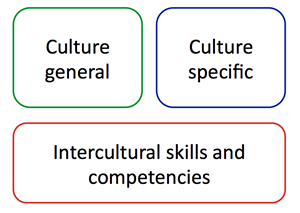ATD Blog
Prepare Your Training to Go Global
Thu May 11 2017

Culture matters. Marketing professionals have known this for a long time. Look at the websites for global brands such as Pepsi or Coca-Cola and see how they design them differently for different countries. In the field of talent development, we are just beginning to grasp how profoundly culture affects us. Culture can make the difference between good training and bad.
What do we need to know about the culture of our participants to create more effective training? We’ll answer this in two ways. The first uses comparative dimensions so that we can compare the differences (or similarities) between cultures. This is called a culture-general approach and is a quick shortcut when working with many cultures. The second is the culture-specific approach, which looks at a culture and identifies what is important in that culture, common behaviors, and unique aspects.
The Culture-General Approach
A culture-general approach to learning uses concepts expressed as two ends of a continuum and compares cultures on those concepts. Let’s use the task-relationship continuum as an example. Some cultures, such as the United States, are more task oriented, whereas others lean toward relationship, and many fall somewhere in between. Some characteristics of the task end of the spectrum include being time-conscious and on time, and valuing accomplishment—anything that can help people accomplish more, faster. Cultures that place more emphasis on relationship have a more fluid concept of time, are better at multitasking, take time to build relationships, and don’t mind people “interrupting.”

This means what is considered good training will be judged differently, as will the facilitator. For example, the facilitator in a task-leaning culture can schedule a brief amount of time for participants to get to know one another, introduce herself briefly, be focused on accomplishing the whole agenda, expect participants to mostly be on time, and start and end at the stated time. In a relationship-leaning culture, the facilitator needs to provide more time for the participants to get to know both her and one another, and expect personal conversations with many of the participants, even perhaps a meal together after the workshop. She must also recognize that variable start times are acceptable, help participants get back in a timely fashion, and start when most are there, which may also require a different training agenda.
The Culture-Specific Approach
The culture-specific approach to understanding cultural differences looks at culture from the inside and asks what is important to, or particular about, that culture. This can affect content, as well as design and delivery. For example, if you are creating a leadership course, do you know what is considered good leadership for your participants, or what assumptions they start with? It varies across cultures. Do you know local leaders to use as examples?
Applying Your Cultural Insights: The ADDIE Impact
As you gain insights into your participant cultures—how they think, their expectations about learning, how they interact—you will begin to see how culture affects all stages of training: needs assessment, design, development, implementation, and evaluation. Asking questions is a key component to needs assessment, and to many aspects of our work.
Yet when we ask questions, we might not get the data we are asking for because of how we ask the questions, or we might interpret the data incorrectly. This could be because of language, direct and indirect norms, or other cultural norms. The bias to look good on surveys, as well as self-assessments, is stronger in some cultures than others. If we know the culture that we are working with, and have the competencies to learn as we go and apply the knowledge that we have, then we can better meet the learning needs of the organization and of the learners in the room.
Where to Learn More
What have your experiences been in training across cultures? What similarities or differences have you encountered? What experiences have you had that you don’t understand? Join my ATD 2017 session, Training Internationally: Effective Design and Delivery, and let’s discuss.
